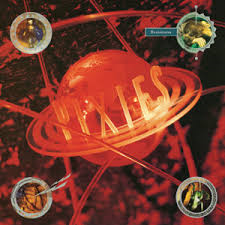Black metal has always been about more than music. Even genre progenitors Venom - despite the crudities of their music and their fundamentally unserious qualities - managed with their first few albums, to create something that not only outraged conservative sensibilities (in the metal scene as well as outside of it), but was presented in a way that looked ideologically significant, whether it really was or not:
Because of its ideological and aesthetic baggage, a lot has been written about black metal over the years (including quite a lot by me; here -
here -
here -
and here -
as well as 200-ish articles and endless reviews published elsewhere).
But there's something special about a book and now that we are a quarter century into its history, black metal has developed its own bibliography. There are lots of books out there that I have yet to read (including some very interesting-looking ones), but this is an overview of the ones I do have.
Two books are really at the heart of black metal literature, Peter Beste's True Norwegian Black Metal and Michael Moynihan and Didrik Søderlind's Lords of Chaos; but more about those when we get there.
As a basic starting point, the Rockdetector A-Z of Black Metal by Garry Sharpe-Young isn't great really, but as a general reference is "not bad".
As it sounds, it's basically an encyclopaedia-style book with brief entries on hundreds of bands. Necessarily, it's far from comprehensive, but is fairly good as far as it goes and has a definition of black metal loose enough to include a meat-and-potatoes NWOBHM band like Witchfynde and, even more dubiously, Lamb of God(!) alongside the more predictable Gorgoroths etc. Sparsely written (and even more sparsely illustrated) its strength is in the sheer quantity of bands include.. My edition is severely compromised by being published in 2001, but hopefully updated versions are available.
A far better introduction/overview (and a very 'good read') is Dayal Patterson's Black Metal; Evolution of the Cult, which, as the title suggests follows black metal from the earliest Venom/Bathory/Hellhammer period to the present day. The great strengths of the book are that a) Patterson knows what he's talking about b) he is not hugely preoccupied by the (admittedly interesting) tabloid fodder of burning churches and murder and c) he covers black metal as a worldwide and not just European or Scandinavian phenomenon and d) the book rests on a TON of detailed and revealing interviews. It's extremely detailed but not (and isn't meant to be) exhaustive, so don't count on your favourite band being covered in detail.
For a window into a far more specific scene, Peter Beste - True Norwegian Black Metal (Vice, 2008) is iconic in itself. This large scale hardback book collects photographer Beste's images of the Norwegian black metal scene of the 90s and while it covers the genre's biggest names, it is especially strong on the second tier of bands (Gorgoroth, Enslaved, Carpathian Forest etc), their environment and the whole BM milieu. Just a work of art.
Performing a similar function but with a lot more reading is Metalion (Jon Kristiansen)'s monolithic hardback The Slayer Mag Diaries, which reproduces the classic years of the grubby photocopied extreme metal zine Slayer, with added context, memoirs and lots of great pictures. As funny as it is enlightening, this captures the carefree (and often smart arsed) spirit of underground fanzines in a more permanent format. Although the focus isn't entirely on black metal, Metalion was part of the scene and wrote about it like few others have. And he wrote a LOT.
Again, not 100% concerned with black metal, Michael Moynihan & Didrik Søderlind's Lords of Chaos has arguably become an influence on the scene itself, for better or worse.
The book has forever crystallised the (admittedly real) connection between black metal and violence, arson, murder and Nazism in the public mind. Ostensibly following the path of Satanism through popular(ish) music, a lot of the focus is again on the Scandinavian scene but with special attention paid to wherever there is drama, crime, murder, controversy etc (in some cases the music involved is non-BM like the Electric Hellfire Club). The key to the book's popularity is its readability and - despite the apparent tabloid qualities - its intelligence and depth of research. Lords of Chaos has been through several updated and revised editions, but as far as I know has yet to cover things like the bizarre double murder by Smutak of Morak Production in Belarus, so there is still scope for further expansion.
Attempting (successfully) to break away from genre clichés is the excellent anthology Black Metal: Beyond the Darkness, definitely not the place to start for the black metal fan, but it's a great compendium of information for the specialist wanting to know more. This book is a collection of essays by some of the best extreme metal writers, focussed on many aspects of black metal, covering various scenes, the aesthetics of black metal, labels, all kinds of esoteric information. A great chapter covers the central-yet-ephemeral figure Christophe Szpajdel, responsible for many of the genre's most iconic logos.
More when I've read more!











.jpg)
%2BJanet%2BJanke.JPG)


















































